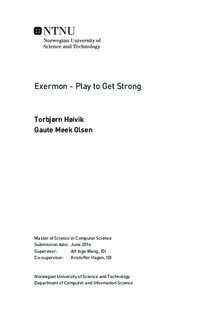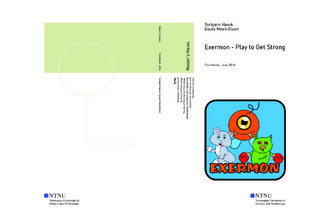| dc.description.abstract | Today humans in modern societies are running higher risks of developing weight-related diseases compared to earlier generations. This is evidenced by a trend of a larger percentage of people being overweight or obese in the western countries. A contributing factor to this increase is our growing use of media and the escalating amount of sedentary workplaces. In order to take advantage of the vast amount of media usage, game developers have started to incorporate body movement or exercise into their games, called exergames. Exergames and the variety of movements in these games, strength training specifically, has still not reached its potential, which is the reason for this study.
In this study, we reviewed existing exergames, video game mechanisms, strength exercise theory, and technology within the exergame field. It is apparent that successful games use game mechanisms such as challenge, fantasy, curiosity, flow, rewards, and social interactions. These findings were then used to design and create a new exergame based on strength training. This new game was then tested on the metrics of motivation, enjoyment, engagement, technology, and physical benefits in order to assess the quality of the game.
Further in the study we detail a description of the exergame that has been tested, a description of the research methodology, our results on the tests, and our discussion and conclusion based on the findings. We found that there are numerous possibilities when creating a game with our premise, and our research show that the game can be motivational, enjoyable, and engaging and at the same time give the players the health benefits that strength training provides. Our method for capturing the movements of the players, however, was far from ideal and further work on this topic is recommended. | |

